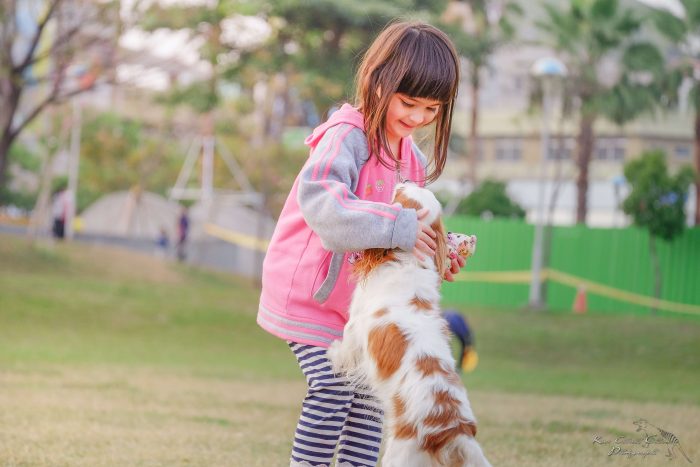

When you teach children how to take care of pet animals, you teach them responsibility and compassion. Many schools even provide pet care lesson plans and taking care of animals activities. Although your main goal may be to tackle a chore, important life lessons can easily follow.
Begin by explaining why pet care is so important. Tell children what can happen if a pet doesn’t get fed or get enough exercise. Make sure they realize that pet neglect can cause animals to suffer needlessly. Be age-appropriate when explaining this concept. This will help foster compassion and lead to overall maturity.
Learn About Your New Pet First
Before getting a pet, it’s a good idea to choose the right pet for your family. Dogs are popular pets. They do require more care than other pets, and can’t be left alone at home for long periods of time. Look for love and loyalty as signs of a happy dog. Cats are more independent but still cuddly and loving. Adopting dogs and cats from a shelter sets a good example of compassion for children. Hamsters, birds, and rabbits are easiest to care for, and even fish can help teach responsibility.
Just as books on baby care help new moms, they can help educate us about how to take care of pets. Plenty of good pet care books are available. Search for taking care of pets youtube tutorials. They are free and can help you decide if a certain pet is right for your family.
Make Pet Care Age-Appropriate
Make sure to assign age-appropriate pet care duties to children. Don’t overwhelm them with jobs they can’t handle. This will only lead to frustration for you and the child. The following guidelines can help.
Ages two through five
Young children can help provide socialization and exercise for dogs, cats, and rabbits. Let children this age pet and brush furry animals. Fish, birds, turtles, and other reptiles are easy for young children to feed. They can also monitor a pet’s water supply.
School-aged children over age five
Allow older children to take dogs for short walks. Let them handle an after-school play session or feeding schedule. Let them assist when taking animals for veterinary and grooming appointments.
Teenagers can be very helpful in caring for pets. They can be assigned almost any chore from walking dogs to driving pets to veterinary appointments. Take care that their job schedules do not interfere with a teen’s extracurricular activities or school work.
Older children may tend to lose interest in pet care chores after the newness wears off. It is important that you avoid picking up the slack for them. Revisit the same conversations you had in the beginning about pet neglect and how pets depend on our care.
Teaching Pet Care Chores to Kids
Discuss what chores need to be done and when. Let your child have input in creating schedules. This also helps teach children organizational skills. Monitor and adjust chores and schedules when needed. Consider posting chores and schedules on a bulletin board or on the fridge. Stars or checks can help monitor how well children keep up with their assigned chores.
Correct children gently when chores are missed and return to that same beginning conversation. Avoid becoming frustrated. Reward children periodically for completing pet care duties. The stars or check’s list can serve as the basis for rewarding.
Let children participate in pet training and selecting pet treats, supplies and toys. Encourage them to ask questions to pet sitters, pet boarders, and veterinarians. This gives them a feeling of ownership. The overall goal is to raise children to value quality pet care.
Pet Care and Child Development
Taking care of a pet teaches children respect for living creatures along with responsibility. They also learn a lesson in trust as they realize that you and the pet are depending on them to complete their assigned chores. Let them know that you rely on them to do a good job. They will develop a sense of pride in a job well done that will contribute to their overall maturity. At the same time, pets will think of children as being leaders and caregivers.
When you teach children how to take care of pet animals, you teach them responsibility and compassion. Many schools even provide pet care lesson plans and taking care of animals activities. Although your main goal may be to tackle a chore, important life lessons can easily follow.
Begin by explaining why pet care is so important. Tell children what can happen if a pet doesn’t get fed or get enough exercise. Make sure they realize that pet neglect can cause animals to suffer needlessly. Be age-appropriate when explaining this concept. This will help foster compassion and lead to overall maturity.
About the Author
Olivia Harper is the co-founder of the blog Daily Dog Stuff. She is a reserved and passionate pet parent who loves to spend time with her Sibe. Read more of her guides and tips by visiting their blog.
Browse Front PageShare Your Idea
Comments
Read Elephant’s Best Articles of the Week here.
Readers voted with your hearts, comments, views, and shares:
Click here to see which Writers & Issues Won.





